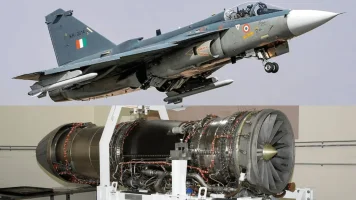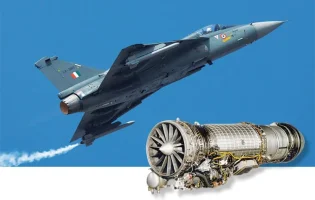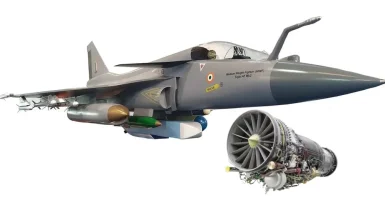- Views: 3K
- Replies: 15
The Indian Air Force's Tejas Mk1A fighter jet was recently displayed at Aero India 2025, featuring a new dual pylon configuration for the ASRAAM Close Combat Missile (CCM). This enhancement signifies a major advancement in the Tejas Mk1A's weapon integration capabilities, further bolstering its operational potential.
Developed and manufactured by Hindustan Aeronautics Limited (HAL), the new dual pylon configuration significantly improves the Tejas Mk1A's weapons flexibility. This configuration, designed to optimize the aircraft's strike capabilities, allows for the mounting of two ASRAAM missiles, primarily used for close-range combat.
Strategically positioned on weapon station 6 (outboard) on the wing, the dual pylon is engineered to support the weight and functionality of the ASRAAM missiles. Each missile weighs approximately 88 kg, and the pylon can accommodate a total load of 310 kg, including two ASRAAMs.
According to HAL, the dual pylon system is currently undergoing in-flight testing as part of the integration and validation process. Successful completion of these tests will lead to operational clearance, enabling the Tejas Mk1A to be deployed with enhanced close-combat capabilities.
The integration of the dual pylon ASRAAM CCM marks a significant upgrade for the Tejas Mk1A, considerably improving its ability to engage aerial threats at close range.
Designed for high-speed, high-maneuverability engagements, ASRAAM missiles are ideal for intercepting and neutralizing enemy aircraft in dogfight scenarios.
With the dual pylon, the Tejas Mk1A can now carry two ASRAAMs on a single pylon, increasing its weapon payload and reducing the time needed to engage multiple targets. This upgrade is expected to give the Tejas Mk1A a considerable advantage in aerial combat situations.



